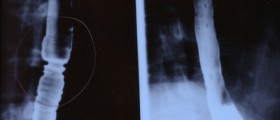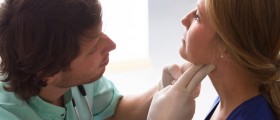
This procedure is carried out with a small, tube-like device which is inserted inside the area through the mouth. The device, called the endoscope, contains a small viewing instrument which makes it possible for the health experts to observe the inside of the above mentioned areas of the human body.
Why is Endoscopy Done?Basically, during endoscopy, the health practitioner tries to find ulcers, inflammation, tumors or bleeding, collecting tissue samples for biopsy or removing any polyps. Thus, endoscopy allows the doctor to obtain a better insight into your health, observing more than he/she could through an X-ray scan. Once the information about your esophageal health has been obtained, the doctor can decide whether you need surgery or not, planning the future course of your treatment.
Furthermore, endoscopy is done in situations where problems in the GI tract need to be diagnosed and found. These problems can take many possible forms, from the inflammation in the esophagus or the stomach, over GERD and narrowing of the area, all the way to enlarged and swollen veins in this part of the human body. In all these situations, as well as in cases of Barret's esophagus, hiatal hernia, ulcers and cancer, endoscopy can be a valuable tool both for the process of diagnosis and for the later treatment procedure.Also, endoscopy is used once the patient has been vomiting blood or has already been treated for stomach ulcers. Hence, endoscopy can be used for monitoring the patient's recovery process.
However, this process can be used for removing any foreign objects from the GI or esophageal tract.In order to prepare yourself for the process of endoscopy, you are advised to inform your doctor of any allergic reactions you are likely to have if you are given certain medications. Also, tell the doctor if you are taking any medications at the moment, especially if these are blood-thinners or similar. Pregnancy, diabetes or any previous surgeries carried out on the GI or esophageal area should be reported as well.
All the above mentioned factors can lead to complications or health problems during endoscopy. Thus, you are highly advised to report these to the health practitioner and ask for advice. Due to the risks involved in the endoscopy process, you are likely to be asked to sign a consent form before the procedure can take place.How Does Endoscopy Feel Like?
The entire procedure will be carried out in a professional medical environment, such as a hospital, clinic or the doctor's office. The process will be managed and performed by a doctor and his/her assistant.Before the procedure however, several tests will be done, including blood tests. If all requirements are met, your will be given a painkiller medicine or an IV sedative. Then, you will have to lie down on the left side of your body, with your head bent forward a bit and a mouth guard in your mouth, keeping you safe from the endoscope. It is important to stay calm and relaxed once the instrument enters the mouth. Bear in mind that this device is as thin as most of the foods you consume, passing through the esophagus without any significant irritation or problems.
When the device gets in, you will be asked to tilt your head a little bit, doing your best not to swallow. Rest assured that you will not be bothered by the accumulated saliva, since the assistant will likely deal with this problem by using a suction.As the doctor moves the device down your throat, he/she will observe the inside of this area of your body through a monitor, taking pictures or collecting samples. Either way, most likely, you will not feel any pain. Yet, mild discomfort may be present.
Once the process is carried out successfully, the doctor will remove the device slowly. The whole process of endoscopy usually lasts for about 30 to 45 minutes, even though there are situations when it may last for a longer period of time, depending on the purpose behind it. Nevertheless, even when the procedure has completed, you will be under the influence of medications for about an hour or two. Refrain from eating or drinking anything until the effect of the medications wears off. Additionally, stay away from alcoholic beverages for at least 24 hours.As for the whole experience, the IV you receive may result in a burning sensation once the needle penetrates the skin. On the other hand, if you are given oral anesthetics, you might feel a bitter taste in your mouth and throat.
At some point of the procedure you might feel as if you cannot breathe. However, rest assured that this is due to the numbness in the throat area and do not panic. Also, the drowsiness, nausea, bloating or cramping are all expected reactions to the movement of the tube inside your body. Thus, do not get frightened but do your best to overcome these problems. Finally, you can always let your doctor know that you are not feeling well by patting him/her on the arm or through some other, similar ways of bodily communication.All in all, endoscopy may be a bit unpleasant, but it is a process which is invaluable for both diagnostic and treatment purposes. Therefore, bear with the discomfort and rest assured that the effect of the procedure will be worth the trouble.

















Your thoughts on this
Loading...